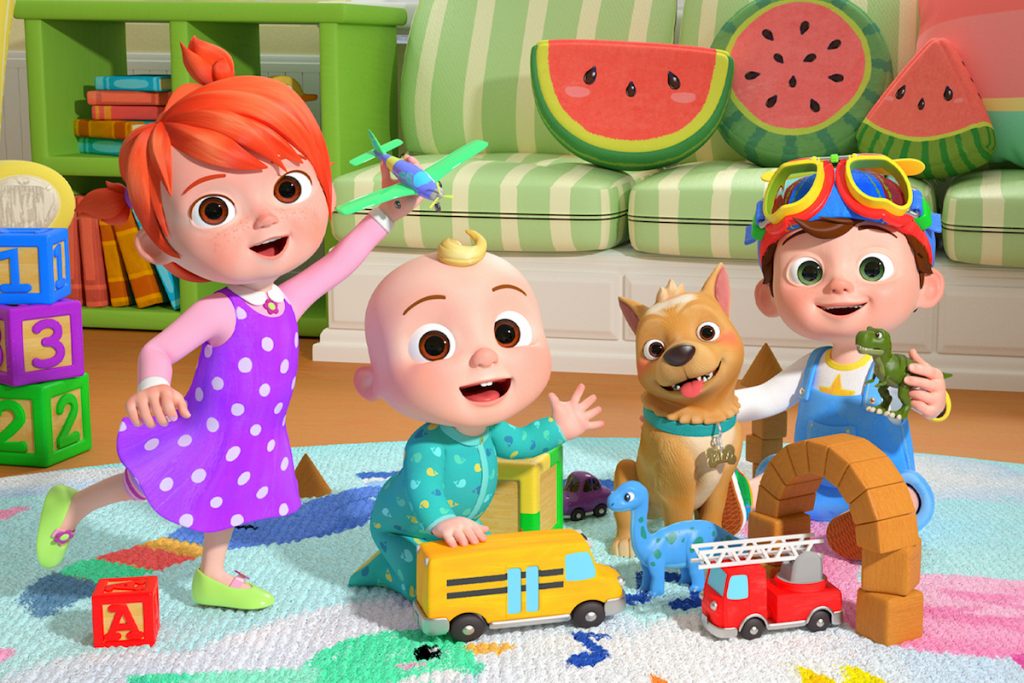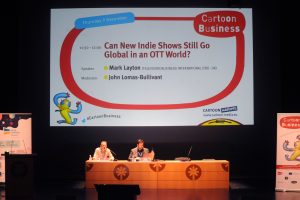
After more than 35 years of operation, TBI is closing its doors and our website will no longer be updated daily. Thank you for all of your support.
TBI Weekly: Going global with an indie kid’s brand
It’s a producer’s dream to create a hit show that turns into a global brand. But is an OTT world making it easier or harder to achieve such a dream? TBI deputy editor Mark Layton finds out
As the global streaming boom continues, with new services still regularly rolling out in new territories, those in the kid’s industry are seeing monumental changes to the familiar landscape.
While linear broadcasters used to be the place to take children’s brands to expose them to a wide, global audience, the international expansion of chiefly US-based services with vast purchasing power, such as Disney+, Netflix and Paramount+, has upended the old order.
The topic has been top of people’s minds as creatives and execs from across the kids sector met in Gran Canaria this week for Cartoon Business.
TBI deputy editor Mark Layton spoke to delegates on one panel this week, sharing research about the benefits and drawbacks of different routes to market provided by this new eco-system. Here are some of the key takeaways:
The SVOD approach
While landing a commission from a global SVOD may seem like the logical first step to building a global kids’ brand, there are pros and cons to partnering with these platforms – as with any avenue to market.
Global SVODs are generally open to taking more risks – like genre or YA content – than linear services, which typically seek content that will appeal to a much wider demographic. They also have much deeper pockets and can provide funding for high-quality projects that local channels and VOD services perhaps cannot.
On the flip side, however, building a brand typically requires three components; marketing, exposure and repetition – the latter meaning the number of times your show is going to be placed in front of a viewer – and while a show will likely gain the exposure with SVOD platforms, the repetition is far from guaranteed.
Furthermore, on the rights front, selling a show to a global platform as a global exclusive may be likely to bring more money at the outset, but that then leaves the rights tied up in the hands of that service.
Using YouTube
Subscription VOD services are, of course, not the only route to building a global brand. AVODs, particularly YouTube, can be immensely important.
YouTube channels act as a complementary service, helping to build a brand alongside SVOD and linear – so long can as content, whether that is shorts, clips or even full episodes, is published frequently and on a reliable schedule.
This approach has worked for the likes of UK-based Moonbug, which last year acquired CoComelon, a brand which, with 122 million subscribers and more than 3.5 billion average monthly views, makes it the most subscribed kids’ channel in the world, and the second-most subscribed channel out of all.
CoComelon has since expanded on to global streaming services including Netflix and a litany of local players worldwide, while, seeing the value in its stable of brands, Kevin Mayer and Tom Staggs’ Blackstone Group-backed investment outfit acquired Moonbug in a $3bn deal in November.
However, as with the SVOD path, there are downsides to YouTube too. It is a big risk to produce a show purely with the intention of placing it on YouTube, where financial returns are negligible on views until very high view counts are achieved.
It is also one of the hardest platforms to cut through on and to do so can take many years and hundreds or even thousands of videos to build up an audience comparable to the biggest brands.
Linear lessons
Unlike OTT services, where shows can get swallowed up by ‘the algorithm’, linear channels tend to give shows on-air promotions and re-runs.
When building a brand locally there is also generally less competition and local broadcasters often want or (depending on legislation in the particular country) need to support locally created content and brands.
Meanwhile, on the rights front, the territory-by-territory approach not only has the upside of offering pubcaster endorsement, but tends to allow producers to hold on to global rights.
Downsides, however, include the limited ‘shelf space’ available on linear services, which typically take less risks and are looking for shows that must appeal to a wider audience, while there is also less local funding available in smaller countries – and certainly less so than from the global SVODs and their deeper pockets.
Opportunity in concert
It seems clear that there is no one-size-fits-all recipe for success when it comes to global brand building, but for the moment, these US SVOD services are not outright replacing linear and local commissioners.
Instead, they are offering new paths to take content global and serve as another tool in the box for brand building, in complementary combination with more traditional routes and the new opportunities offered by AVODs such as YouTube.




